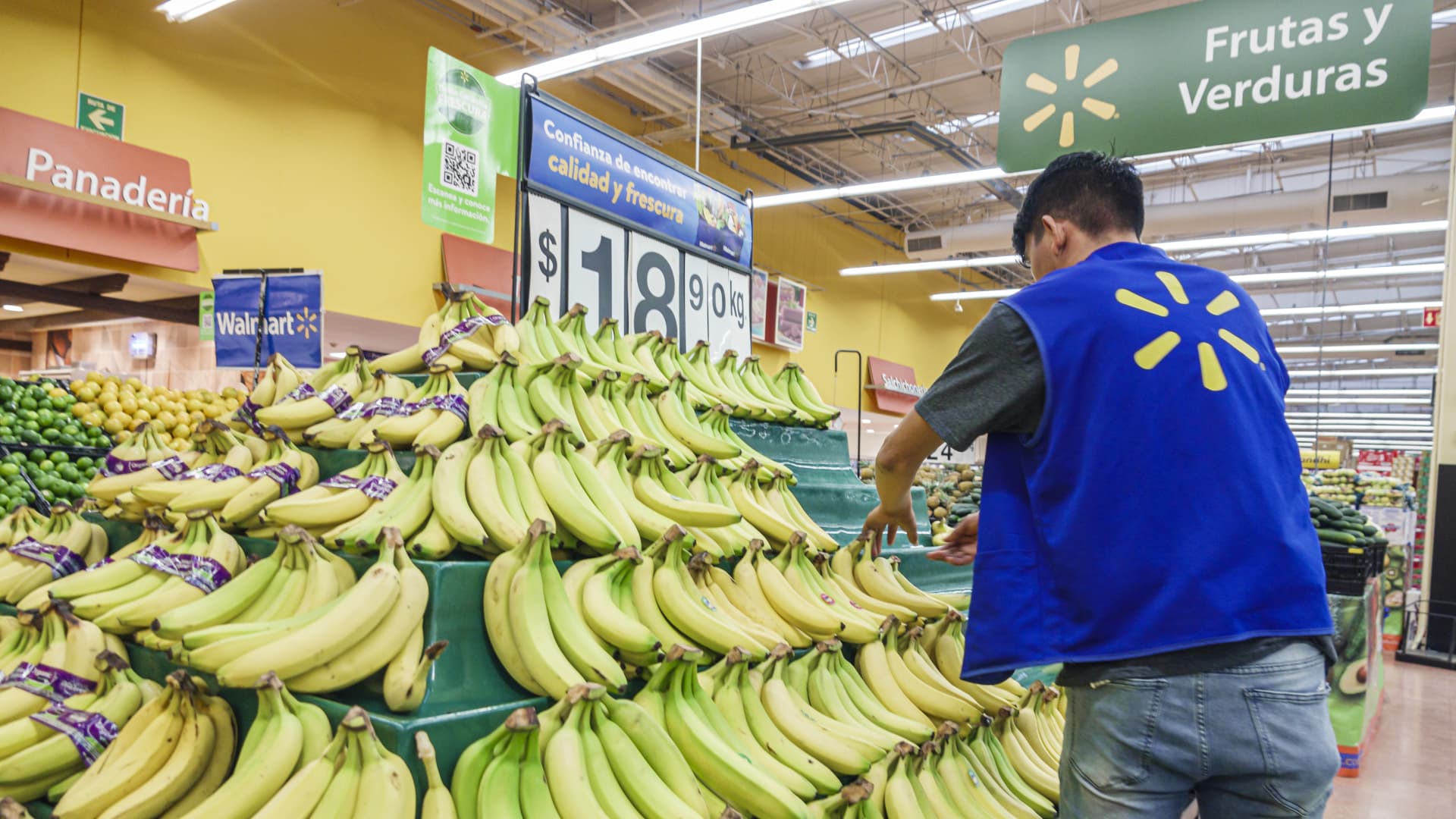Produce goes bad and clothes go out of fashion fast, issues that add to the massive food and retail waste the world’s major retailers are on the hook to solve. Walmart thinks AI is part of the answer.
The big-box giant is launching an in-store artificial intelligence to advise employees on everything from banana ripening to seasonal fashion that may need to be put on sale before it’s too late.
The internally developed AI technology allows Walmart employees to scan produce like bananas to see how ripe the product is. Then, using generative AI, a digital dashboard will make a suggestion on what to do with the product, eliminating the need for human decision making in the absence of informed advice.
Giving AI to associates will help them make data-driven proactive decisions that lead to reduced waste in stores, said Swati Kirti, senior director of data science at Walmart International Tech.
The AI may advise the employee to do a price change, or send the product back to a vendor if that’s part of the policy for that particular item, or recommend donating it as the best outcome from the analysis.
“This AI tool basically helps associates take off that decision making and helps them to know exactly what to do with that product at that given time,” Kirti said.
The scanner can also be used on seasonal items like clothing.
“Apparel is very sensitive to seasonal changes,” Kirti said. “It’s very important to really make quick decisions around how we are going to reduce the waste, or apparel, which would be maybe unsold items or returns happening after the season has passed.”
If an AI scans clothes by midseason, for example, it can advise employees on whether it should be put on sale earlier. The more clothes are sold, the less chance it ends up being destroyed. Many clothing items are not recyclable, due to being made of blended fabrics.
The program will be piloted in Canada soon, with the hope of expanding it to other countries in the near future.
The U.S. throws away about 60 million tons of food each year, or about 40% of the country’s food supply, according to RTS. It’s also the single largest item taking up space in U.S. landfills, accounting for about 22% of municipal solid waste. A 2018 UCLA Anderson report found that Walmart produced 3.5 million tons of food waste, or about $2.6 trillion in annual cost and a $7.4 billion loss for Walmart’s bottom line. The company has a goal of eliminating operational waste in the United States, Canada and Mexico by 2025. About 94% of its total global operational waste is produced by these three countries.
U.S. residents also discard about 11.3 million tons of clothing waste each year, according to Earth.org.
“Using tools like our AI-powered waste management system helps lessen our environment footprint, requiring fewer societal resources and, at the same time, helping to reduce our own operating costs,” said Sravana Karnati, senior vice president and chief technology officer for Walmart International Technology, Walmart Global Tech.
Walmart has also implemented programs like “Take Back,” which allows customers to package up their used and unwanted clothing and send it to them. Its charitable arm Walmart Foundation also works with Goodwill to recycle unsellable textiles.
Walmart isn’t alone in using AI to tackle in-store waste, as several startups are creating tools to solve this growing problem. Winnow tracks food waste in restaurants, hotels and retail chains in order to help businesses optimize their consumption and purchasing by monitoring waste bins with AI. Shelf Engine monitors SKUs (standardized product codes) for perishable food, so it’s easier to track items before they go bad as well as helps with running out of popular items.
“When it comes to food waste, there is no silver bullet,” said ReFED’s executive director Dana Gunders, which has worked with Walmart for a few years on food waste solutions. “We need help throughout the food system to reduce waste, and it seems AI is providing a growing variety of solutions from better forecasting demand, enabling price reductions on food at risk of spoiling, and now this new solution that Walmart is rolling out.”
Homer Swei, senior vice president for healthy living science at nonprofit EWG, said moves like Walmart’s are also tied to the fact that consumers now expect more from companies when it comes to their ecological footprints, production and packaging, ingredients/materials, and waste and disposal practices. “Retailers have tremendous power to minimize their own environmental footprint, as well as the brands and their supply chains, and to do good for the planet,” Swei said.
Retailers are taking a variety of approaches to building sustainable practices into core business areas. Amazon is working on systems to reduce its shipping packaging, including getting rid of its signature brown boxes. It’s been able to have a 41% reduction in packaging since 2015. Target is also working on zero waste in the U.S. by 2030, including through landfill diversion programs and having half of its branded clothing aiming for zero waste production.
“It’s crucial that we all play our part to safeguard our environment,” Swei said. “That means the consumers, the brands we purchase, the suppliers they use, and the retailers where we choose to buy our products or services.”
Walmart said its savings from AI-informed decision-making can allow it to pass on the savings to customers and invest in its own expansion, for which it has aggressive plans in the coming years.
“It’s a cycle. If we can offer great products at a great price, our customers will continue to shop with us. When we do this, we gain their trust and they become repeat customers, benefitting our bottom line,” Karnati said.


























































